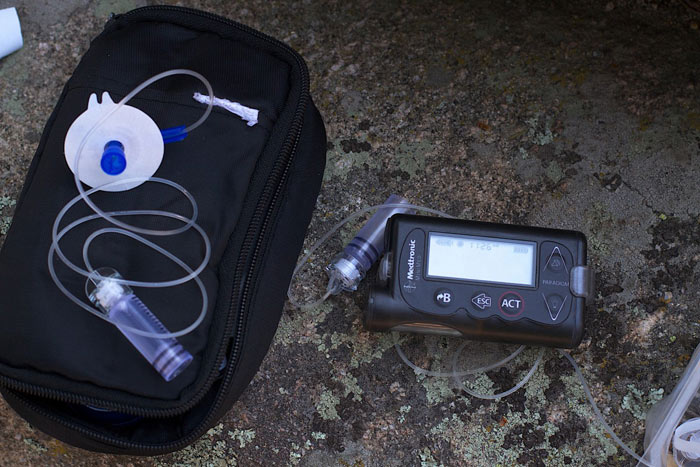
A do-it-yourself diabetes movement has taken the perspective that they are not waiting on regulators and manufactures to improve communication and deliver closed-loop technology for type one diabetes. The We Are Not Waiting Movement took matters into their own hands by hacking into their devices, building their own closed-loop systems, and automating insulin to deliver the appropriate dose for a much lower price.
Although type one diabetes controls the life of those who suffer with it, an effective way to manage the condition has only been gradually developed. Patients with the condition complain that manufacturers of glucose monitors and insulin pumps have been slow to develop a closed loop diabetes system—a device that communicates the glucose information and doses insulin on its own—because they can’t seem to get it passed regulators.
At this time, there’s only one hybrid closed-loop system, and it comes with limitations. Called the Medtronic 670G insulin pump system, this technology is the closest thing to a closed loop system on the market. And it comes at a high price, selling at $7,250. Furthermore, the system is only available in the United States and won’t be available in Europe until the end of 2018.
Hybrid System vs. DIY Closed Loops
Although the Medtronic 670 is the first device approved by the United States’ Food and Drug Administration (FDA), do-it-yourself hackers and tinkerers hold the position that patients have the right treat themselves, arguing they should be able to build their own devices. These homemade technologies are often cheaper and more effective than what is currently available.
Homemade devices combine multiple technologies and use a computer or a phone application to monitor glucose levels and insulin doses. AndroidAPS, DIYAPS, OpenAPS, and iPhone’s Loop communicate glucose levels to an insulin pump. The apps are often free, but you may pay a small price for the communication hardware such as RileyLink, which uses Bluetooth to enable the glucose monitor and insulin pump to communicate with one another. The information to build, automate, and use these technologies is available online from open source platforms such as Nightscout, where the We Are Not Waiting movement was hatched.
However, building a closed loop system has its risks. If a patient has the necessary technology skills, the risk of building and maintaining a self-made devices drops considerably. A medical negligence firm of solicitors states that doctors need to talk to patients, ask about their technological abilities, and help them decide the best way to proceed.
Safety & Conservatism in Hybrid Closed Loops
The 670G pump has built-in automation and a glucose sensor. Approved by the FDA in 2016, the device has a safety-first mentality. Medtronic’s high functioning technology comes with little risk, though you will have to attend several training sessions and have it on manual mode for a week. Still, these obstacles don’t compare to the uncertainty of tinkering with your own device.
The 670G is doesn’t take risks with the amount of insulin it determines is appropriate. For example, the current Medtronic model won’t allow the user to adjust glucose ranges. If a patient doesn’t have the ability to customize settings to target levels, the insulin administered may not be precise.
Other complaints about the 670G are the frequency of alerts and the use of averages. While closed loop devices prevent the rise and fall in blood sugar during sleep and meals, the Medtronic 670G sensor isn’t as accurate or enduring. DIY closed loop systems require less finger pricks and steps to take. They can also use other sensors that display real-time data and do not need periodic transmitter charges.
Deciding to Take the Risk
The Medtronic system is safe to use, there is no question about that. The matter at hand is whether to settle for less or create a closed-loop system that may work perfectly, but could accidentally harm you when encountering problems.
Patients who use DIY closed-loop technology must understand how the algorithm works. Checking code thoroughly and making sure that it is implemented accurately are also crucial components. It is imperative that patients make sure they re-validate the entire system when implementing new code. Education and caution are key. When users diligently set up automation and carefully build the tech of the device, the risks go down.
Yet patients will have to wait for regulators to approve manufacturers’ more accurate, efficient and reasonably-priced closed loop systems. Until then, the decision to take the risk or settle for an expensive product and averaged insulin doses remains up to the patient.






